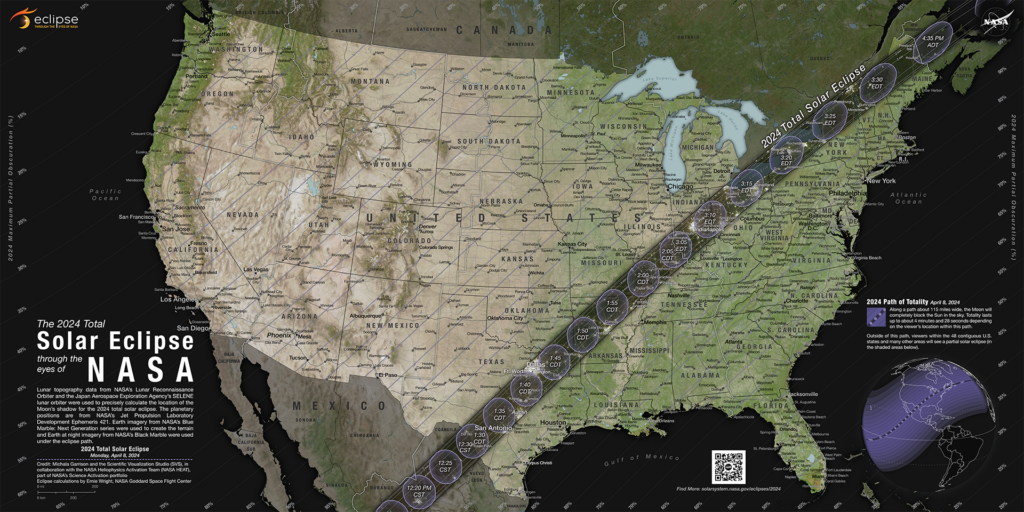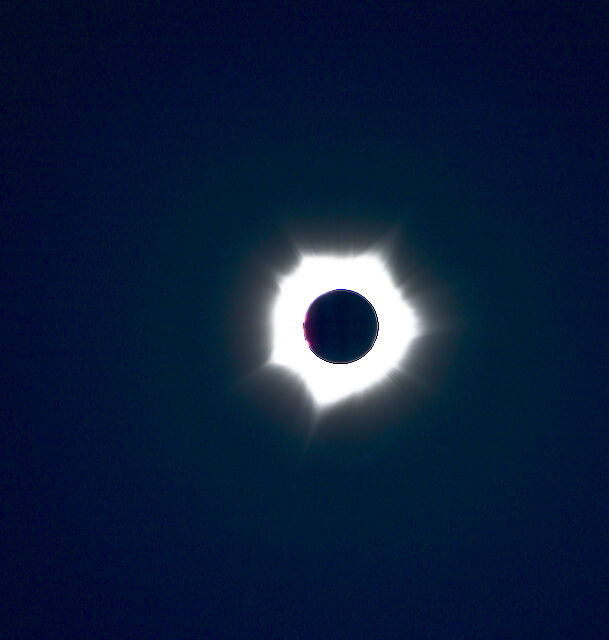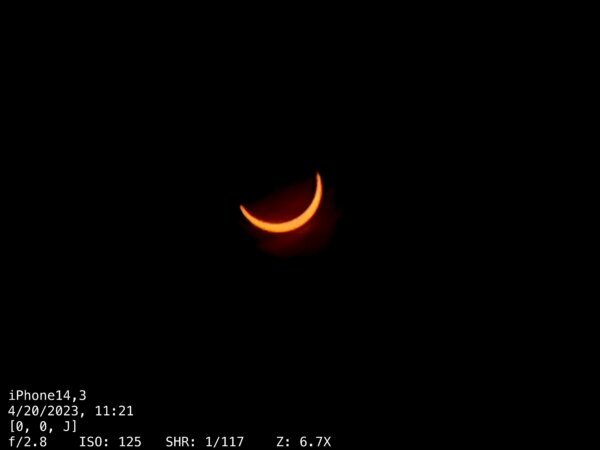Sixty days from now on April 8, the sun and new moon will meet in the daytime skies over North America to create a sky sight without compare — an eclipse of the sun. For some viewers, the sun will be totally eclipsed by the new moon while for the vast majority of viewers, the sun will be only partially eclipsed.
Thirty-one million people in the U.S. are estimated to live in the 108- to 122-mile-wide path of totality that crosses the country from Texas to Maine. The path of totality will cross numerous major U.S. cities and is expected to draw more viewers than the total solar eclipse of 2017, which was an estimated 215 million, and also crossed the U.S.
The 2024 total solar eclipse will differ from 2017’s event in a number of significant ways. Most notably, totality will be minutes longer, four-plus minutes versus two-plus minutes and the sun is approaching Solar Maximum, which is predicted to produce a far different appearance in the ghostly corona that occurs only during totality.

Safety First
Solar eclipse observers have to follow safe sun viewing procedures, as failure to do so will result in eye injury.
Here is everything you need to know about eye safety and how to safely view the solar eclipse. If you plan on wearing solar eclipse glasses, using a camera/smartphone and/or any kind of optical aid, you need to order the appropriate items now to ensure you will have them on eclipse day.

In 2017, there were solar filter/viewer products that did not meet the strict ISO standard and presented a danger to the public.
For your eye safety, the American Astronomical Society (AAS) states on its website:
“As of February 8th — T (totality) minus 2 months — we are no longer adding vendors to this page. Any company worthy of your business should have established itself well before last October’s annular solar eclipse across the Americas, let alone well before this coming April’s eclipse!
Important: We do not recommend searching for eclipse glasses on Amazon, eBay, Temu, or any other online marketplace and buying from whichever vendor offers the lowest price. Before you buy a solar viewer or filter online, we recommend that you make sure that (1) the seller is identified on the site and (2) the seller is listed on this page.”
Extensive preparations were made in 2017 and again in 2024 by individual states and cities regarding the expected influx of visitors traveling to and from localities to see totality. Safety on the road is paramount, as can be seen by this snippet from 2017 (which still applies to 2024):
Martin Knopp, associate administrator of the Office of Operations in the Federal Highway Administration (FHWA) at the U.S. Department of Transportation in Washington cautioned that motorists must keep their eyes on the road and not watch the eclipse while driving. Many Interstate highways are in the path of totality and there may be cars pulled over on the shoulders with people out of their cars looking at the eclipse. FHWA is an excellent source of information if you are planning on driving to the eclipse.
I can personally attest to the increased amount of traffic on highways and local roads that I experienced in 2017 traveling to and from Cookesville, Tennessee, for totality. For 2024, I have added on extra travel days to avoid the huge crowds expected in Texas.
It is probably too late to find a spot in the path of totality but you may get lucky. If you are going to travel, be mindful of expected delays and do not wait until the day of the eclipse to get to your destination.
Weather Prospects
Because this eclipse involves the entire U.S., the best advice is to check your local weather resource 2-3 days before the eclipse. Of course, with the eclipse taking place during the springtime, clouds and rain can be the order of the day for much of the country. Here is an excellent weather resource for you to use.
The good news is if you get bad news about the weather on eclipse day, there are several livestreams and webcasts that will be available. I am hoping I will be able to share my images from Texas with our WTOP audience very shortly after totality.
Deep Partial Solar Eclipse In The DMV
In the D.C. area, you can witness a deep partial solar eclipse only, as we are not in the path of totality. In Washington, D.C., the new moon will start to cross the face of the sun at 2:04 p.m. and obscure 89% of the sun at maximum eclipse which occurs at 3:20 p.m. The eclipse ends at 4:32 p.m.

You can get the particulars of the solar eclipse for where you live (or will be for the eclipse), by going to this interactive map, which shows the whole U.S. Google map style and allows you to pinpoint your location. All of the information about the eclipse at your viewing spot pops up — it is really nifty.
Photography
You can photograph the solar eclipse with a camera, smartphone and/or telescope. Doing so safely is job one in order to protect your eyes and equipment. Do not wait until eclipse day to photograph the event. You need to read up on how to do so safely and efficiently, get the right and safe equipment and procedures in place, and practice before eclipse day. You can get the information you need here.
For smartphone images, I highly recommend buying the Solar Snap App Kit from this AAS approved vendor. I beta-tested it during the 2023 hybrid total solar eclipse while at sea off the coast of Australia and was amazed at how good the images taken with it were. It can image both partial and total solar eclipses. (I have no monetary or contractual affiliations with the company, I just know the app and kit work.)
I’ll have more stories on the eclipse, including local events, as we get closer.
Follow Greg Redfern on Facebook, X @SkyGuyinVA and his daily blog to keep up with the latest news in astronomy and space exploration.
Get breaking news and daily headlines delivered to your email inbox by signing up here.
© 2024 WTOP. All Rights Reserved. This website is not intended for users located within the European Economic Area.







